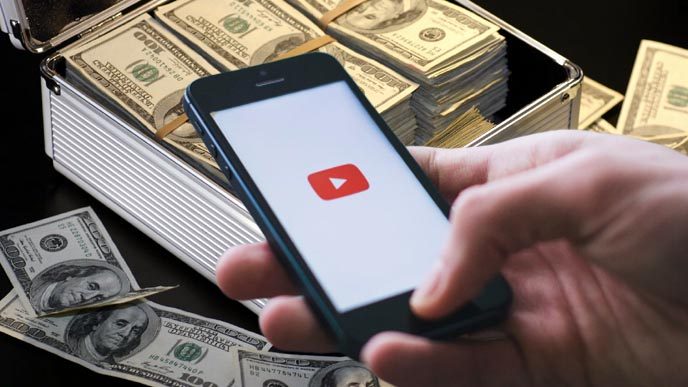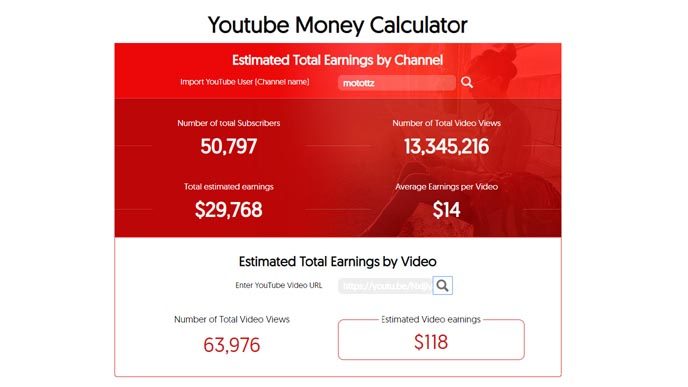I’ve had a YouTube channel since 2006, around the same time I started blogging over at Beyond the Rhetoric. Coincidentally, this is also around the same time that I met John Chow for the first time. Oh, and as it turns out John’s YouTube channel started up in 2006 as well. Go figure. At the time, many of us didn’t really see YouTube as a viable place to make money directly; rather it was an easy (and free) place to host our videos. We take this sort of thing for granted these days.
Of course, so much has changed over the years, and YouTube is certainly not immune to that. Many a star has been discovered on YouTube — it’s how Justin Bieber got his start — and many more have come to turn YouTube into their full-time careers. It’s not too late to get started either. Considering that the top 10 highest paid YouTubers of 2018 all made over $14 million, that’s nothing to sneeze at. And many more are making more than comfortable bank too.

So, what can learn from these top YouTubers who are literally making millions of dollars each year on the platform?
The Riches Are in the Niches
While there will always be exceptions to this rule, it’s generally true that you have a better shot at success on YouTube if you stick to a relatively narrow niche than if you post videos about everything under the sun. This way, subscribers and viewers can know exactly what to expect from you.
It’s the same thing you see with blogs, on Instagram, and other similar types of platforms. That person is known for finance. That Instagrammer is known for fancy food. That YouTuber is known for makeup tutorials. You can veer outside of your wheelhouse now and then, like with travel vlogs or Q&A sessions, but from a business standpoint, it’s usually best to stick within an understood vertical.
The Bucks Are in the Brands
Perhaps one of the biggest mistakes that budding YouTubers-to-be make is that they assume they’ll be able to make all their money through AdSense integration. Those are the ads that run directly on YouTube itself, including pre-roll video ads, banner ads and the like. You need to get into the YouTube Partner Program for that, which requires 1,000 subscribers and 4,000 watch hours in the last 12 months.
And while you certainly can make some money that way, you won’t make a lot of money that way. Many, many factors play into this, but you can typically only expect a buck or two for every 1,000 views you get on a video. This will depend on how many views are monetized, what niche you’re in, how much advertisers are willing to pay for that niche, and so forth. Some YouTubers might make as much as $6 or $7 CPM, but it’s still not a lot.
You can get an estimate through the YouTube Money Calculator on Influencer Marketing Hub.

Do you see a problem with this picture? I used John’s channel as an example here and it says that he only has a total estimated earnings of under $30,000. The channel trailer that he runs has had over 60,000 views (as of this writing) and they’re estimating he’s only earned $118 from it.
But that’s only from the AdSense. As John has mentioned before, he uses YouTube as a lead generation machine. When people convert on offers he promotes, he gets way more than a few bucks. It’s all about finding monetization opportunities beyond Adsense.
For some channels, that could be affiliate marketing or merch. For many more, however, it’s about sponsored content and branded content. Working with brands directly as an “influencer” will land you a lot more money for that video than the couple bucks you’ll get through the default monetization.
It’s All About That Watch Time
Among the top ten highest-paid YouTube stars listed in the article I linked above, half of them are gaming channels. It used to be the case that YouTubers might chase after subscribers and views (both of which are still good things), but at this point, watch time is much, much more important in terms of built-in earning potential.
When you consider that a typical YouTube video might be five to 10 minutes in length, and most viewers don’t watch it all the way through, you’re not getting many minutes per view. Now, contrast that to someone who livestreams their multi-hour gaming session, where many viewers stick around for far more than a few minutes. That one video could easily garner over 100 minutes of watch time from a single viewer.
With that kind of time frame, YouTube can insert many more ads during the video itself (there must be a certain length of time between ad breaks), which then corresponds to more earning potential.
Target the Big Audience
Conversely, the highest earning YouTube channel earned an estimated $22 million in 2018. It’s called Ryan ToysReview and it features a 7-year-old boy who reviews toys. Why is this important? His target audience (or rather the audience his parents and whoever else helps him run the channel are targeting) is other children.
Let me let you in on a little secret. Kids can watch the same thing over and over and over again and never really get tired of it. The same child can watch the same video a dozen times. By contrast, most other videos will typically only be watched once per person. That unlocks some real earning potential too, because you are getting more views (and more watch time) with no additional effort.
The other point worth mentioning is that all of the top YouTube channels tend to skew toward the younger end of the spectrum too. Even when you look at more controversial content, like PewDiePie and Logan Paul, they’re mostly targeting tweens and teens. These are the big audiences on YouTube.
What’s Unique Is You
But really, far and away the biggest lesson you can take home from top YouTubers is that you need to have a unique personality. The most unique part of your YouTube channel, the thing that no one else can fully replicate, is you. Love them or hate them, Logan Paul and his brother Jake Paul have big personalities, and their target demographics gravitate toward them.
Music video and makeup tutorial mogul Jeffree Star, with his $18 million annual earnings, is visually striking in his presentation. That’s how he manages to sell $100 million worth of cosmetic products each year too. Let your personality come shining through. That’s what will distinguish you from everyone else.
Do you have a YouTube channel? What sort of videos do you post? What YouTube goals do you have?